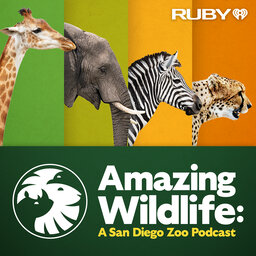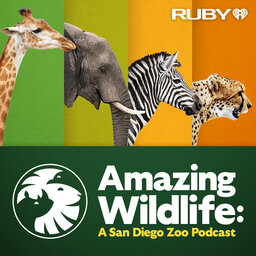Endangered Species Day – Celebrate Conservation Successes
Endangered Species Day is May 17, and in this episode, hosts Rick and Marco talk about species that need our help. From the ālula plant to the axolotl salamander, many species around the world have seen their numbers drastically decline. There is good news, though, because there are steps we can take to help safeguard ecosystems and create sustainable populations. Tune in to find out how conservationists are coming together to support these plants and animals and how you can make a difference.
 Amazing Wildlife: A San Diego Zoo Podcast
Amazing Wildlife: A San Diego Zoo Podcast


